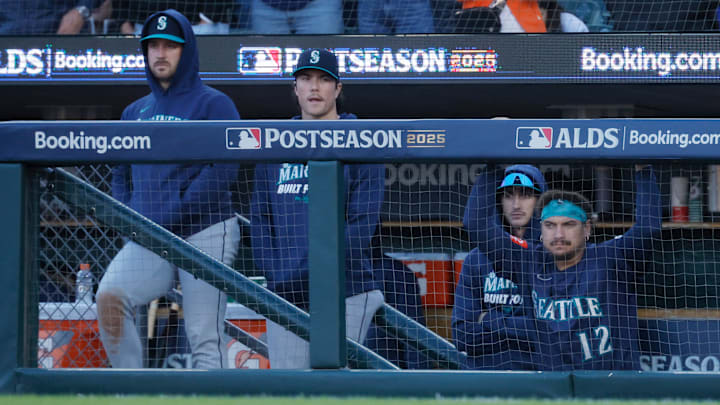Sign stealing has been in the sport of baseball for decades. Players used to try to decipher catcher signals that were being relayed to the pitcher. Men standing on second base would peer down the pipe and then pass that information along to the hitter in a discreet manner. First or third base coaches would try their best to break the codes as well. This information was then taken back to the dugout and spread like wildfire to a player's teammates.
With the advent of PitchCom, a device that allows catchers and pitchers to communicate pitcher and locations via radio frequencies earpiece and a controller, sign stealing had to be adapted to the modern game. No longer could players watch catchers flash signs with their fingers. Now, they had to try and watch a pitcher's glove for minute hand movements that could give away a pitcher's grip. Watching where a catcher sets up could also be relayed.
There was an unwritten rule of gamesmanship now, and players on both sides of the ball had to respect this process.
The advancement and prevalence of technology throughout baseball has made pitch tipping and sign stealing even more of a science than it already was. An increase in field staff has also added several additional eyeballs to help catch a pitcher's tips or clues as to what pitch is coming. With the high frequency that a team sees a pitcher in a five-game series, the familiarity grows with a pitcher.
It is legal in baseball to use technology to gain information on a pitcher's tips so long as that information isn't relayed in real time. in a game in August between the Boston Red Sox and the San Diego Padres, a Red Sox hitting coach was seen looking at an iPad showing various pre-pitch setups of Padres closer Robert Suarez. Base coaches are also seen straying beyond their boxes on the side to get a better view of the pitcher during games.
Pitchers across baseball are well aware of this phenomenon. “It’s always something you have to be worried about,” San Diego Padres starter Dylan Cease said. “And you never really can be 100 percent sure that it’s not going on.”
However, sign stealing and pitch tipping has been pushed to the forefront of discussions this postseason thanks to efforts by players such as Andy Pages of the Los Angeles Dodgers and Josh Naylor of the Seattle Mariners, and one former St. Louis Cardinals pitcher isn't a fan.
Former St. Louis Cardinals ace Adam Wainwright doesn't like sign stealing in the modern game.
All of this has come to a head in this year's postseason. In the fourth inning of Game 4 of the American Division Series between the Seattle Mariners and Detroit Tigers, Mariners' first baseman Josh Naylor was on second base with no one out and Mitch Garver up to bat. Left-handed pitcher Tyler Holton was on the bump with Naylor standing a few dozen feet behind him.
Naylor was clearly signaling to his batter at least the location of the upcoming pitch. He could clearly be seen throwing his arm to the side or both arms up in the air to hopefully give Garver an inkling of what was coming his way.
The game, which was broadcast nationally on FS1, had two former Cardinals in the booth in Adam Wainwright and AJ Pierzynski. Wainwright didn't enjoy the shenanigans by Naylor.
"I don't like it."
— Jomboy Media (@JomboyMedia) October 8, 2025
Adam Wainwright was in the broadcast booth mind blown by Josh Naylor blatantly relaying signs to the batter from second base https://t.co/8eJkbhStox pic.twitter.com/3R5eS1t5BD
"I've never seen it so blatant in my whole life," said Wainwright of the sign stealing attempts. "I don't like it."
Pierzynski was also taken aback by Naylor's efforts, and the two veterans of the game agreed that the "old" way of doing this was far more subtle. Former players also took to social media to express their dislike of the efforts by players like Josh Naylor and Andy Pages. "I love the discussion on Naylor being so blatant about signaling signs from 2B. But back in the day it wasn’t “a gentleman’s agreement” that kept the signals more discreet. IT WAS THAT GUYS WOULD DRILL YOU!" said former third baseman Trevor Plouffe on Twitter/X.
There's a chance that Naylor wasn't even relaying actual signs. Instead, he could be putting on a show to distract the pitcher, and he may have done just that given the walk to Mitch Garver after a few pitches. Players have tried this approach of late to throw off the pitcher rather than help his batter. Los Angeles Dodgers center fielder Andy Pages was caught on camera signaling to Teoscar Hernandez what pitch Matt Strahm had coming earlier this week as well.
“It’s like having the answers to the test."
— Jayson Stark (@jaysonst) October 6, 2025
Thanks to Andy Pages and Matt Strahm, October pitch-tipping is a massive topic right now.
Read this incredibly in-depth piece from @TheAthleticMLB and you'll understand why.https://t.co/h1UtHmcTCO pic.twitter.com/6DV8MPYrlL
The former battery duo of Adam Wainwright and AJ Pierzynski did make it clear that there is nothing wrong with players' efforts to relay information to the hitter. However, they did take issue with the glaring and obvious nature of these communication efforts.
